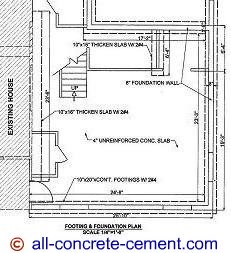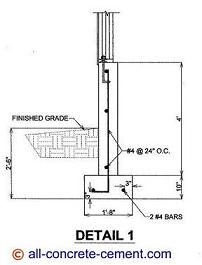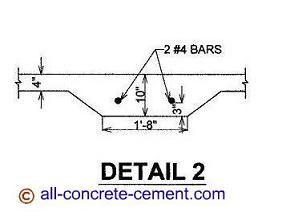|
[?]Subscribe To This Site
|
Continuous Footing DetailsConcrete footing details such as details 1 and 2 are the most common
concrete footings at residential construction. Unlike the continuous footings in details 1 and 2 which designed to support walls, spot footing or column footing are designed to support columns or posts. The continuous footing against the existing house was intended to avoid any engineering analysis of the existing walls, footings, and foundations, which can be costly. This was a necessary step given the fact that the existing house was built in the 1930s.
The interior footing near the center of the addition is there to support the bearing wall. This bearing wall is intended to cut down the floor joist span minimizing the depth of the floor joists.
This plan was one of many that I had drawn, coordinated with city planning and city building department as well as owner. My engineering background came in handy during the plan approval process speeding up the process, usually take less than 2 weeks depending on how fast the city review. As an added benefit, very rare that my plans require engineering stamp for city approval, a definite cost saving to the home owner. I have coached homeowners on permit application, preparing plans, general contracting, hiring subs, etc. thereby empowering them so they can fully in charge of their project. The 2'-6" (reads 2 feet 6 inches) required by code due to frost, a depth determined by city building department where freezing will not affect the house. Since water increases in volume when freezes, 2'-6" is a depth below freezing line thereby preventing the house from being pushed upward when ground freezes.
Back to footing details |
|








